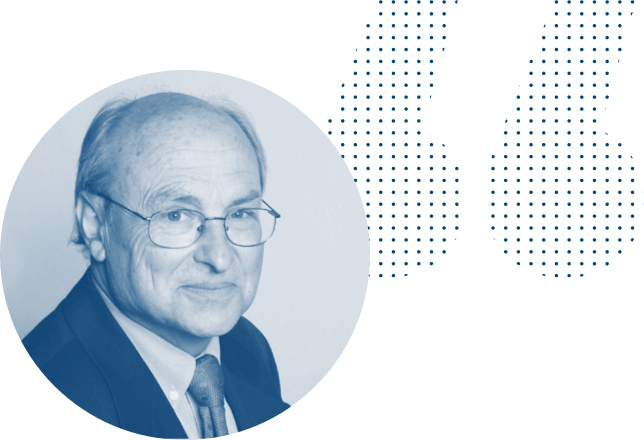Testimonials
Interview

Francesc Raventós
First President of the Executive Committee of the Barcelona Strategic Plan 2000
In 1987, when Pasqual Maragall was the mayor of Barcelona, a strategic plan was developed for the city. How did it come about?
In October 1986, Barcelona was nominated the site of the Olympic Games, and municipal elections were held eight months later. Barcelona City Council was won by the list headed by Pasqual Maragall. I was on the list too, and he appointed me Deputy Mayor of Organisation and the Economy. Everyone was enthusiastic about holding the 1992 Olympic Games and the investments that would be made, but there were also fears of paralysis after the Games. The constant question was: “And what about the next day?”
I suggested to Mayor Maragall that a strategic plan be launched for the city to implement by the year 2000.I said that the plan for the city had to be made by the city and not by Barcelona City Council, because otherwise the people would view it more coldly and would not feel it was their own.
A strategic plan was a relatively new concept at that time. How did you define it?
In a city that had only emerged from dictatorship a few years before, there were no models for designing future plans with the city's involvement. A major issue in which Maragall played a key role was in defining the nature of the plan, claiming that it had to be both economic and social. At first it was only viewed as economic, but Maragall insisted that it should be economic, social and participatory, approved by consensus and supported by public-private collaboration.
What would you highlight in Francesc Santacana's work over 25 years?
He seemed like an ideal candidate to me because he had experience and common sense. He then proved that he was the right choice. Santacana was the driving force behind the plan. He exerted great professional effort and did so with great enthusiasm. His death was a great human and intellectual loss for us all.
What were the great challenges and the most important needs to meet?
Boosting the city economically, rectifying the shortage of infrastructure, attracting investment, developing knowledge, innovation and research and responding to social needs caused by major shortcomings inherited from policies dating back to the dictatorship.
What is the most important legacy that you have left for the PEMB?
The satisfaction of taking an approach formed from broad participation and consensus that has proved useful for the people. But the most important part was the fact that the approach was implemented. The fact that the plan serves as a benchmark for other Spanish and South American cities has also brought me satisfaction.
As the visionary that you are, where do we go now?
In a context of hyper-uncertainty, the Metropolitan Strategic Plan must be able to identify the transformations and potentialities that the new environment offers to promote an open international and multicultural metropolis that values culture, has a powerful human capital and aims to be a model for a society of economic and social progress. Barcelona must create an innovative business network while also serving as a hub for discussion and research in future fields such as digital innovation, health, environmental protection and cultural plurality.
What must we change by 2030?
Barcelona is an attractive city on the international scene for doing business, high-level conferences, export volume, innovation capacity and tourism. But the metropolitan area of Barcelona needs more internal coordination to act as a truly cohesive area in a world of large urban areas and powerful economic centres.
For a more powerful and effective country, the Barcelona Metropolitan Strategic Plan should be supported by a strategic plan for Catalonia and both should be framed in the new global environment.
